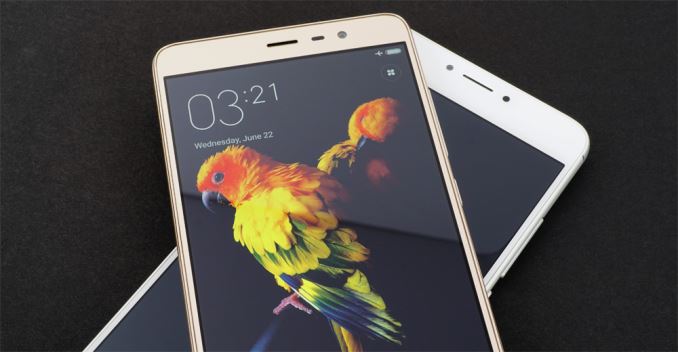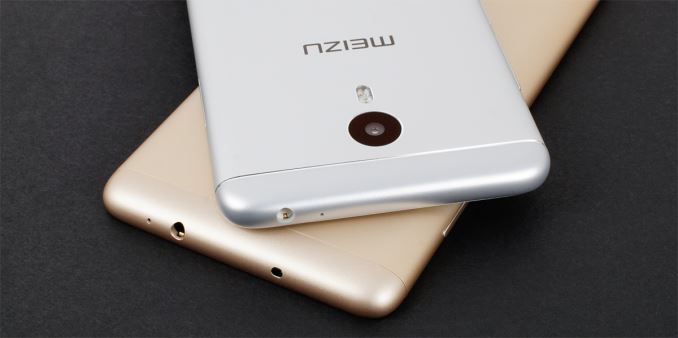The Meizu M3 Note vs. Xiaomi Redmi Note 3 Review: Comparing Notes
by Matt Humrick on July 12, 2016 8:00 AM EST- Posted in
- Smartphones
- Mobile
- Xiaomi
- Meizu
- Redmi
Final Words
I’ll admit it: I’m spoiled. I’m used to using the latest technology and playing with the recent flagship phones. I do not get many opportunities to review lower-cost devices, so I was not sure what kind of user experience to expect. After looking at the Meizu M3 note and the Xiaomi Redmi Note 3, I can say that both exceeded my initial expectations but in different ways and to different degrees.
The M3 note’s aluminum chassis is sturdy, with an attractive, symmetrical design. Additional machining details, such as the groove for the volume and power controls and the slots on the back that hide the endcap seams, are a nice touch shared with Meizu’s more expensive models. The M3 note also has a great fingerprint sensor, and Meizu’s Flyme OS includes some nice navigation features, like swiping up from the lower bezel to access recent apps instead of tapping a dedicated button.
The Redmi Note 3 and its Snapdragon 650 SoC easily outperforms other phones in its price range and approaches flagship numbers in some of our system performance tests. It cannot match the peak GPU performance of higher-tier SoCs, but its sustained performance is nearly the same once temperature forces the other GPUs to throttle frequency. Whether opening or switching apps, navigating the UI, scrolling in the browser, or working in apps, this phone feels fast. The Redmi Note 3 is a clear leader in performance per dollar.
Due in part to their larger-than-4000mAh batteries, both phones deliver excellent battery life, lasting more than 12 hours in our Wi-Fi browsing test—the longest of any phones we’ve tested—and nearly as long in PCMark. The M3 note’s battery life is generally a little better than the Redmi Note 3’s, but the latter remains close while delivering much better performance.
While there are positive elements for both phones, we need to be realistic. Neither phone delivers the same user experience or has the same feature set as more expensive flagships. In order to reach a lower price point, some compromises naturally need to be made. This becomes obvious as soon as their displays light up. Both panels are capable of reaching a respectable 450 nits max brightness and have good viewing angles, but black levels are subpar even among other phones in their class. Both panels also fail to cover the full sRGB gamut, reducing color accuracy. Their default calibrations also miss the target white point, giving the Redmi Note 3’s screen a blue tint and the M3 note’s a magenta hue. Both phones offer the ability to adjust white point, but only the Redmi Note 3 provides a setting that actually improves grayscale accuracy. Unfortunately, the Redmi Note 3’s poorly configured gamma leaves its screen looking dark with less shadow detail, which is most noticeable when watching movies or playing games.
Camera performance is another area where these two phones struggle. The Redmi Note 3 is clearly the better of the two, capable of capturing some nice looking images in good lighting. Its HDR mode is also effective, naturally brightening darker areas while maintaining color saturation and detail. As the lights dim, however, its performance drops. Like the M3 note and the other phones we tested in this price class, it produces noisy images lacking in detail. Even with good lighting, the M3 note’s images show excessive shot noise that noticeably degrades image quality. It also experiences issues with exposure and focus in certain conditions.
The M3 note is noticeably slower than the Redmi Note 3, but its performance is similar to other phones in its price range. People who primarily use their phone as a communication device—phone calls, email, messaging—or for working with lightweight apps—scheduling, note taking, web browsing—will likely find it to be fast enough. The M3 note can handle casual games, but it’s not capable of playing more demanding 3D titles.
At the beginning of this review I noted how similar the M3 note and Redmi Note 3 are on paper and wondered if this would translate into an equivalent user experience. The short answer is no. The Redmi Note 3’s superior performance and slightly better camera give it the edge. It just feels fast, much faster than its peers using octa-core A53 CPUs, which just are not going to be competitive at this price point anymore.
While the pace of innovation at the high-end naturally slows, the mid-range and low-end phones start looking more attractive. Flagship features and hardware continue to trickle down to lower price points, producing more-capable phones with better user experiences. Both the M3 note and Redmi Note 3 are evidence of this trend. Xiaomi’s introduction of the Redmi Note 3, however, goes even further, signaling a jump in capability that all new phones in its category will need to match.














79 Comments
View All Comments
serendip - Wednesday, July 13, 2016 - link
How about reviewing the Mi Max? That's a monster phone that's bigger than the old Sony Z Ultra and the cheapest variant is around 1300 yuan.djayjp - Wednesday, July 13, 2016 - link
Holy mother of god... talk about disruptive!!! The Xiaomi changes the entire industry.djayjp - Wednesday, July 13, 2016 - link
Oh wait, no LTE... ><Pissedoffyouth - Thursday, July 14, 2016 - link
Has LTE for me in the UK, just not band 20djayjp - Wednesday, July 13, 2016 - link
Why am I seeing the Redmi Note 3 coming with a MTK Helio X10??I found it listed on newegg canada
Eri Hyva - Thursday, July 14, 2016 - link
There are two different versions of Redmi Note 3, the older Mediatek version and the newer Snapdragon versionserendip - Thursday, July 14, 2016 - link
That's right, the main difference between the two versions is the network frequency support. See http://www.mi.com/note3/specs/The MTK X10 version supports FDD-LTE, TDD-LTE, TD-SCDMA, WCDMA and GSM bands. The Snapdragon version adds CDMA2000 and CDMA 1x support to that, mainly on China Telecom's CDMA network. Maybe Anandtech should amend the specs table to reflect this. You won't be able to use CDMA on North American networks though.
I'd love to see power efficiency comparisons between the Helio X10 and Snapdragon 650 when other components are the same, instead of an apples-to-pears comparison here. I'm surprised the X10 in the Meizu has a more efficient radio when on HSPA.
aliasfox - Thursday, July 14, 2016 - link
The camera section was good, but I'd like to see one more comparison, if it's possible. In addition to higher noise and underexposure in the low light shots, some of the cameras exhibited very compressed dynamic range as a result of using higher ISOs. Colors are more desaturated, highlights are more easily blown out, and shadows are more crushed.This is pretty hardware dependent, but some good exposure algorithms could mitigate it slightly.
Impulses - Thursday, July 14, 2016 - link
Having read the review in full, the Meizu is just about what I'd expect but the Xiaomi is a surprise... Shame about LTE support over here.realbabilu - Friday, July 15, 2016 - link
I think the this snapdragon 615 should be benched with 808 on G5 or mi4c for comparison